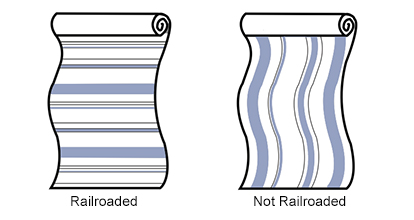How to Hang Peel and Stick Wallpaper
Mar 18th 2023
If you're ready to hang your peel and stick wallpaper, we've providing you a helpful guide on how to prep your walls and achieve a high quality look for your peel and stick wallpaper.
BEFORE YOUR APPLY THE WALLPAPER: SURFACE PREPARATION
For best results all surfaces should be clean, smooth, dry and free of mildew. We do not recommend using on textured surfaces, over existing wallpaper, brick, cinderblock, unpainted drywall or plaster.
Preparing a wall surface for peel and stick wallpaper involves a few important steps to ensure that the wallpaper adheres properly and stays in place. Here are the steps to follow:
- Clean the wall surface: Start by cleaning the wall surface thoroughly to remove any dirt, dust, or grease. Use a damp cloth or sponge and a mild detergent solution to wipe down the wall, and then let it dry completely.
- Smooth out any rough areas: If there are any rough or uneven areas on the wall, use sandpaper or a sanding block to smooth them out. This will create a smooth surface for the wallpaper to adhere to.
- Fill in any holes or cracks: If there are any holes, cracks, or dents in the wall, use spackle or putty to fill them in. Allow the spackle to dry completely, and then sand it down until it's smooth and even with the wall surface.
- Prime the wall: Apply a coat of primer to the wall surface to create a smooth, even base for the wallpaper. Allow the primer to dry completely before proceeding.
By following these steps, you should be able to prepare your wall surface for peel and stick wallpaper and achieve a smooth, long-lasting result.
HOW TO HANG PEEL AND STICK WALLPAPER
Measure the wall height and pre-cut strips to match the wall height, allow an extra 1-2 inches for trimming both the top and bottom. Make sure to align any design from strip to strip.
This means "STRAIGHT MATCH" designs are matched at the same height. It is where the left and right edges of the wallpaper strip match in a straight horizontal line with the left and right edges of the next strip of wallpaper "HALF DROP" designs repeat across the roll half way down the vertical repeat and must be taken into consideration when each strip is cut. Do not cut "HALF DROP" design strips like you would "STRAIGHT MATCH" or your strips will line up incorrectly.
Cut and trim product with a sharp razor knife changing the blade often to help maintain a smooth clean cut. Number the back of each strip as you go to keep your design in the correct order (only if pattern requires it).
Starting on the left side of your wall, measure out from the corner 20.5" (52.1 cm) and mark the wall lightly with a pencil. Put your level on this mark and draw a straight, level, vertical line. This is the guide for your first strip, it is important that it is straight.
Peel about 12" (30.5 cm) of the backing away from the paper. Apply the paper to the top of the wall, allowing 1-2 extra inches to overlap the ceiling which will be trimmed off later. Align the right side of the strip with your vertical line to your mark and lightly press the edge to the wall along the line. If needed, you can reposition to ensure a vertical seam. Working from top to bottom, pull the backing away from the paper as you evenly press the paper to the wall. Do not force the paper and be careful not to pull or stretch the product or the pattern will not align. For best results, we recommend having one person guide the paper at the top and along the seam, while the other holds the opposite edge away from the wall until the seams are aligned.
Using a plastic smoother, make your way down the strip in a back-and-forth motion, smoothing the material to the wall and pushing out any air bubbles.
Trim off the excess material at the ceiling and baseboard with a ruler and sharp razor knife.
REPOSITIONING OR REMOVAL
To remove slowly pull the edge from the top corner directly downward. Wallpaper can be repositioned and easily removed.
CLEANING
Wallpaper may be wiped clean with a damp cloth. Using excess liquid may damage the product and we do not recommend.

 We apologize that our order processing has not been consistent during this pandemic and please know that we are working very hard to return to quick and consistent order processing. Our distribution center is operational and is currently processing orders as indicated below:
We apologize that our order processing has not been consistent during this pandemic and please know that we are working very hard to return to quick and consistent order processing. Our distribution center is operational and is currently processing orders as indicated below:

